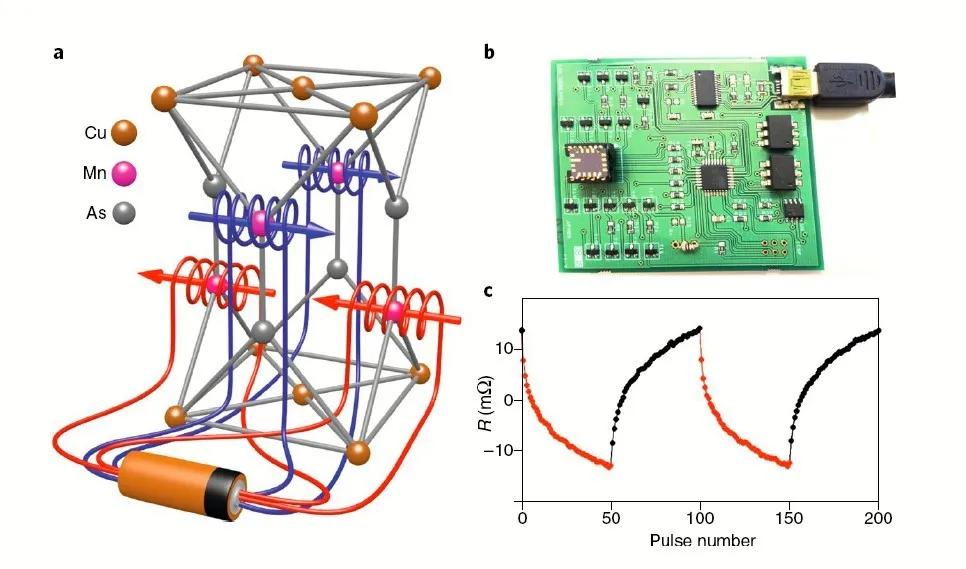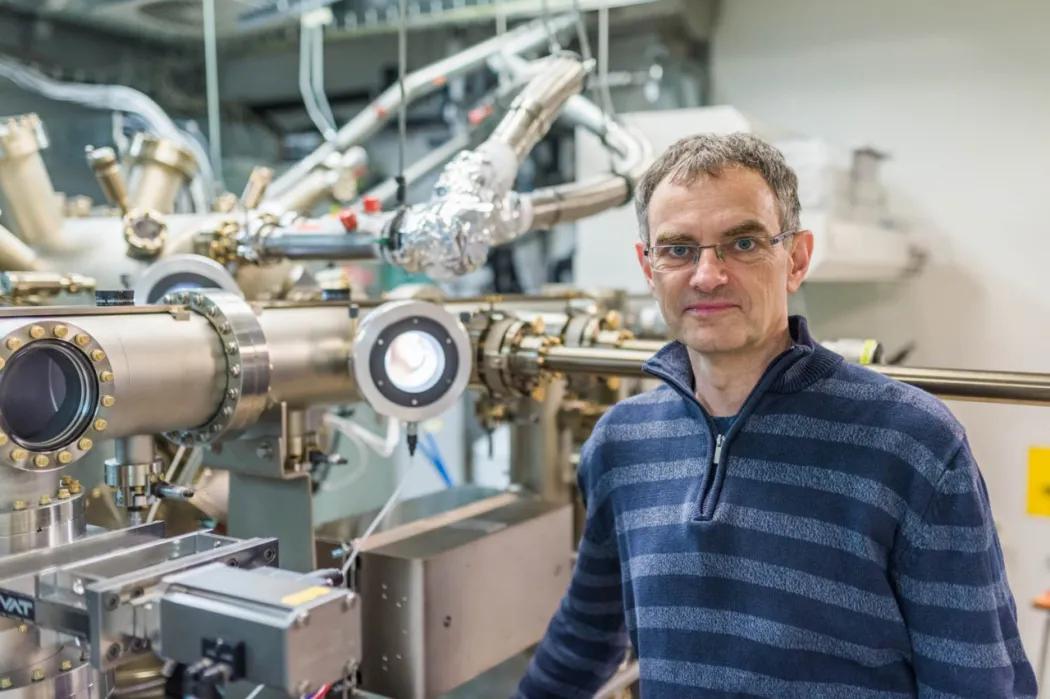Discoveries made by the international team of the ASPIN project lead by Tomáš Jungwirth from the Department of Spintronics and Nanoelectronics of the Institute of Physics of the Czech Academy of Sciences have attracted worldwide attention. In order to create a new type of memory its members have used antiferromagnets, materials that had never before been considered for these purposes – not even theoretically.
The new discovery not only allows a thousand times faster data storing, but it may also find applications in AI and artificial neural networks.
Current memory devices, such as hard discs in our computers, use magnetisation to store data. In ferromagnetic materials, electron spins align themselves in one direction and thus contribute to the magnetisation of the material. That is why it is easy to manipulate them as well as to detect, for instance, with the help of magnetic fields. After the magnetic field is switched off, the spins remain aligned together permanently and thus serve for storing information. In non-magnetic materials the electron spins are oriented randomly, the magnetisation is zero as is its utility for memory storage.
Antiferromagnets, the main focus of the ASPIN project, externally behave as non-magnetic materials. The electron spins in these materials, however, are not oriented in a random way but their direction regularly alternates from one atom to another in the lattice. The material then contains two interlacing magnetisations oriented in the opposite direction that externally cancel each other. For this reason, antiferromagnets have not until now been considered interesting enough materials for practical applications.
The scientists from the Institute of Physics have not only described new physical phenomena, through which one can use the antiferromagnets in order to write, read and store information but have also constructed an experimental device, that can be connected to a computer and demonstrate the principle of antiferromagnetic memory.
In common magnetic memory devices, information writing is done with the help of conventional electromagnetic coils. Due to the structure of antiferromagnetic materials, it was necessary, however, to create similar coils directly at each individual atom. This was achieved due to the crystal structure of the antiferromagnets CuMnAs or Mn2Au that generate such virtual atomic coils when influenced by a normal electric current.
The new way of information writing may in the future substantially speed up computers: In order to write information, one needs only extremely short electric pulses of the order of picoseconds. This is a thousand times shorter period than is normally achieved with the currently used ferromagnetic memories. Information reading is also relatively easy because writing changes the electric resistance of the material.
Antiferromagnetic memory exhibits other unexpected qualities. It does not have to be binary (current computer memory uses binary writing in the form of ones and zeros) because it can change the electric resistance step by step, and it cannot be disturbed by a strong external magnetic field.
The goal of the ASPIN project is to develop the new field of antiferromagnetic spintronics. Spintronics is a field of electronics that specializes in electron spins and their use. Spin is a quantum property of a particle that may be understood as an intrinsic form of angular momentum. The research related to the project spans well beyond magnetic memories. In addition, it explores the interface between spintronics and other areas of modern physics, such as Dirac quasiparticles and topological phases of condensed matter.
At the beginning of 2018, the team published a series of articles concerning antiferromagnetic spintronics in journals such as Science Advances, Nature Nanotechnology and Nature Communications. The research topic of antiferromagnetic spintronics even earned a focus edition of the journal Nature Physics.
The Department of Spintronics of the Institute of Physics has earned its international reputation through top-class research. It has published over thirty articles in Nature and Science family journals and it has held two ERC grants in the last ten years. The coordinator of the project has been invited to present its results in plenary talks at major international conferences on magnetism such as Intermag2018 in Singapore, ICM2018 in San Francisco, and JEMS2018 in Mainz.
The project has brought together scientists not only from the Czech Academy of Sciences and Charles University, but also from three Max Planck Institutes in Berlin, Dresden and Halle, University of Mainz, University of Nottingham and a Spanish company IGSresearch Ltd.
Bibliography:
- K. Olejník et al., Science Advances 4, eaar3566 (2018)
doi: 10.1126/sciadv.aar3566 - P. Wadley et al., Nature Nanotechnology, on-line 12 March (2018)
doi: 10.1038/s41565-018-0079-1 - S. Y. Bodnar et al., Nature Communications 9, 348 (2018)
doi: 10.1038/s41467-017-02780-x - T. Jungwirth et al., Nature Physics 14, 200 (2018)
doi:10.1038/s41567-018-0063-6 - J. Železný et al., Nature Physics 14, 220 (2018)
doi:10.1038/s41567-018-0062-7 - L. Šmejkal et al., Nature Physics 14, 242 (2018)
doi:10.1038/s41567-018-0064-5



